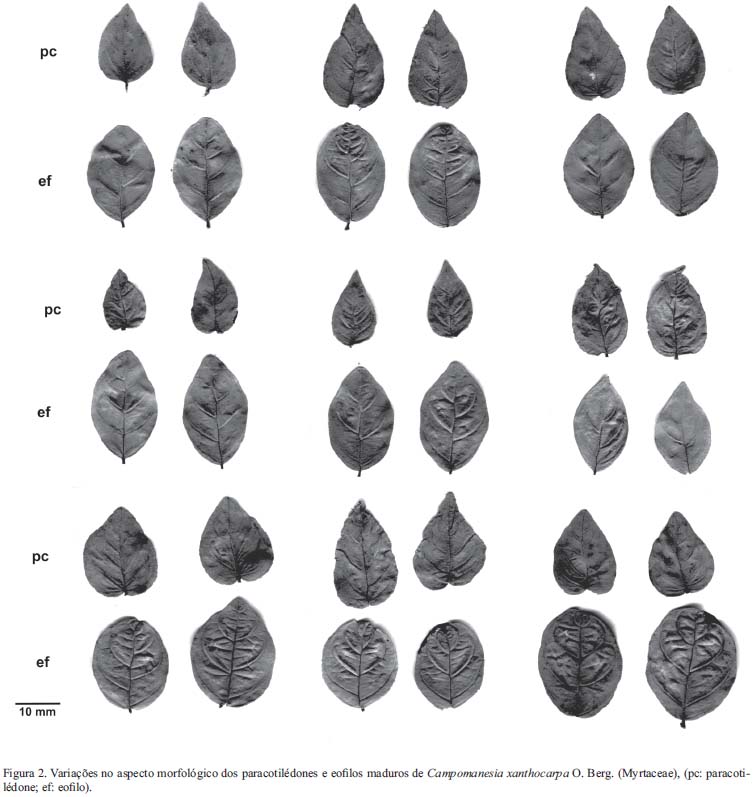Campomanesia xanthocarpa ("guabirobeira") is a heliophytic tree species that occurs from Minas Gerais to Rio Grande do Sul. To describe the morphology and anatomy of the seedling, seeds were collected and planted in a vermiculite substrate. Seedlings were collected for morphological analysis from the root emergence stage to that where the first eophyll pairs emerge. For anatomical analysis, seedlings were collected 7, 30 and 60 days after germination. The samples were fixed in glutaraldehyde (1%) + formaldehyde (4%), embedded in historesin, sectioned by microtome, and mounted on a permanent slide. The seedling is epigeous, phanerocotylar with simple, opposite paracotyledons and eophylls. In 7-day-old seedlings, cambium formation begins and, 30 days after root emergence, the seedlings show secondary growth. The paracotyledons and eophylls have similar anatomical and morphological characteristics. The hypocotyl is the main storage body, containing starch grains, especially in 7-day-old seedlings. Glands and secretory cells occur in most organs excluding the root. The epidermis of the paracotyledons, eophylls and hypocotyl has simple, unicellular trichomes. Idioblasts with crystals are common in the mesophyll.
Developmental stages; morphology; anatomy; gabiroba




















